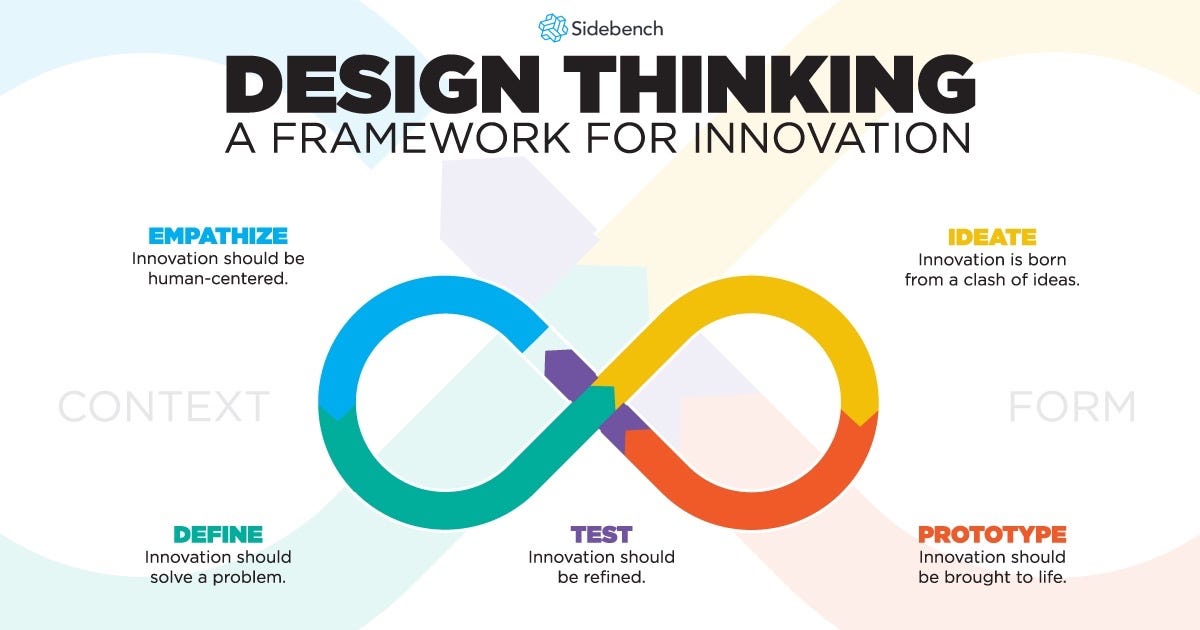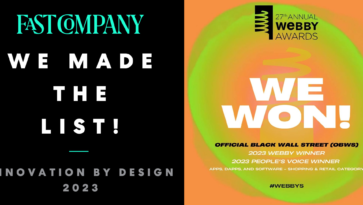
If you’re a head of innovation or strategy in a forward thinking global brand, chances are that you’ve encountered the phrase “design thinking” when meeting with your product team about how they’re shaping the product roadmap to better suit the needs of your users.
In this article, I’ll explore how design thinking not only drives innovative product development, it surfaces opportunities to wow your customers by building brand loyalty, competitive advantages, and ultimately driving positive ROI.
Design thinking is a key component of any company looking to regularly introduce innovative ideas. It follows a proven, repeatable process that puts the end user front and center of every decision you make. This comes naturally to a seasoned product team, but is a strategy that needs to be embraced across the entire organization.
“More than just aesthetics, design thinking is a process through which human-centered solutions are crafted.”
So What Is Design Thinking? How Does it Impact my Innovation Strategy?
Design thinking is a methodology built on making decisions based on empathy for the end user.
It “brings together what is desirable from a human point of view with what is technologically feasible and economically viable,” according to IDEO CEO Tim Brown.
After seeing the many different ways design thinking has been implemented in different types of organizations, one interesting learning we gleaned was that everyone’s process can include a varying numbers of steps.
The main point of each company’s design thinking methodology is that there is a set process. IDEO, for instance, uses four steps, Stanford has five, and in 1969, Herbert Simon laid out seven steps to his design thinking process.
No matter how many steps you use, the point is to create a proven, repeatable process that fits the needs of your business and surfaces learnings from your users to inform the decision making process.
When Does Design Thinking Apply to Your Innovation Strategy? (Hint: Always)
The Harvard Business Review (HBR) suggests three scenarios in which companies should consider design thinking:
“Every established company that… 1) needs to focus on user experience … 2) intends to globalize its business [and] that 3) chooses to compete on innovation rather than efficiency must be able to define problems artfully and experiment its way to solutions.”
If your goal is to drive innovation for a global brand, a design thinking methodology to creative problem solving is the perfect framework to manage experiments that will derive the best solutions.
A London Business School study cited by John Howkins posited that design thinking has a proven return on investment. In his book, “The Creative Economy: How People Make Money From Ideas,” says that, “for every 1 percent of sales devoted to product design and development a company’s sales and profits will rise on average by 3–4 percent a year for five years.”
Practical Applications Of Design Thinking Driving Innovation for Global Brands
Procter and Gamble (P&G) used design thinking in 2008 to revitalize Oil of Olay, which is now known as Olay. P&G observed shoppers in mass retail chains and high-end department stores. They realized they targeted women in their 50s, but they had ignored women in their 30s and 40s. P&G checked their assumptions and developed multiple skin-care goals, testing prototypes, price points, and store displays. When the new products launched, consumers welcomed them. Procter and Gamble, in line with HBR’s goals, solidified its global presence by focusing on creating a top-notch experience for the user. (HBR)
Another design thinking example is from the U.S. Department of Veterans’ Affairs. Likely as a result of the 2014 controversy, the VA developed their own customer journey map with two goals in mind: to test a human-centered design process within the VA and to provide an experience that addresses “the needs, perceptions and expectations of veterans we serve.
From HBR:
“This form of artifact helped us better tell a story to various stakeholders,” says Melissa Chapman, a designer who worked at the Center for Innovation. Even more important, she adds, it “helped us develop a strategic way to think about changing the entire organization and to communicate that emergent strategy.”
The U.S. Department of Veterans’ Affairs is not necessarily looking to globalize its business in the same way that Procter and Gamble might. However, the VA felt compelled to prioritize its user experience to treat veterans with the care they deserved. And that’s exactly what they did.
Design Thinking Humanizes Products and Generates Iterative Results
HBR’s Jon Kolko says it best: “Design thinking is an essential tool for simplifying and humanizing.”
Similar to how you likely change out your smartphone for new models, designing for your end users and customers is an ongoing process. That’s where design thinking really adds value.
“Design thinking describes a repeatable process employing unique and creative techniques which yield guaranteed results,” writes Fast Company staff, “usually results that exceed initial expectations. Extraordinary results that leapfrog the expected. This is why it is such an attractive, dynamic and important methodology for businesses to embrace today.”
At Sidebench, design thinking is at the core of everything we do. Both in the products we build for our clients and our own internal processes in which we evaluate how we operate every facet of the business every day. When it comes to taking the next step forward with an innovative strategy, design thinking a great framework through which to evaluate product and business strategy direction.
— Jay Chang, Partner & Head of Product Innovation at Sidebench
Jay is a Partner & Head of Product Innovation at Sidebench, an LA based Corporate Innovation Lab, and an advisor to the USC Blackstone Launchpad Incubator. He’s also an avid foodie, chef, & Instagrammer publishing as@BehindTheKnife on Instagram. At Sidebench, he’s worked with with enterprise companies like Red Bull, Pabst Blue Ribbon, Sony, NBC, Cedars Sinai, Oakley, Facebook, and Andreessen Horowitz. Jay graduated from the University of Southern California with a BS in Business Entrepreneurship focused on technical entrepreneurship and marketing. Throughout his multidisciplinary product focused professional career, he’s developed a deep understanding of user first experiences and business case driven approach to technology consulting.







